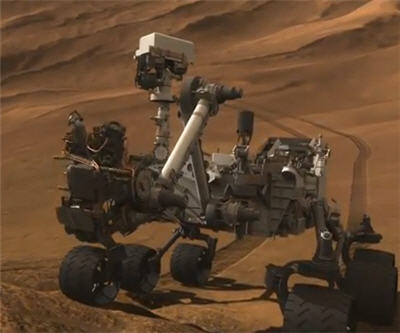
Following on from NASA’s successful mars mission of the rovers Spirit and Opportunity, NASA’s latest rover, Curiosity, was successfully launched on Saturday. The $2.5 billion Mars Science Laboratory mission is attempting to determine if Mars has an environment that could support life.
Curiosity, which is five times the size of the previous vehicles, will orbit the red planet for a few months and then land on August 2011.
The rover is equipped with a two metre arm that can take soil samples and drill rock. Rock samples are subject to a number of tests, including laser-induced radio spectrometry where the soil sample is vapourized and analyzed.
To generate power Curiosity will have a radioisotope thermoelectric generator, which uses the natural decay of plutonium-238 to generate heat that is turned into electrcity. Mars landers Viking 1 and Viking 2 used a similar system.
Curiosity is much heavier than the previous rover, which deployed a balloon system to land on Mars. Curiosity uses an elaborate parachute and staged rocket system to safely land.
Trips to Mars have been notoriously difficult and marred with many failures.
Russia launched its own mars explorer, Phobos-Grunt, early in the month, but the mission seems to be in trouble since the spacecraft’s rockets had a low burn, and the explorer can’t get out of earth’s orbit.
2 Comments
Dale
“Curiosity, which is five times the size of the previous vehicles, will orbit the red planet for a few months and then land on August 2011” …. I guess they mean 2012
Alan
That, or it will fly though a time warp and has already landed.